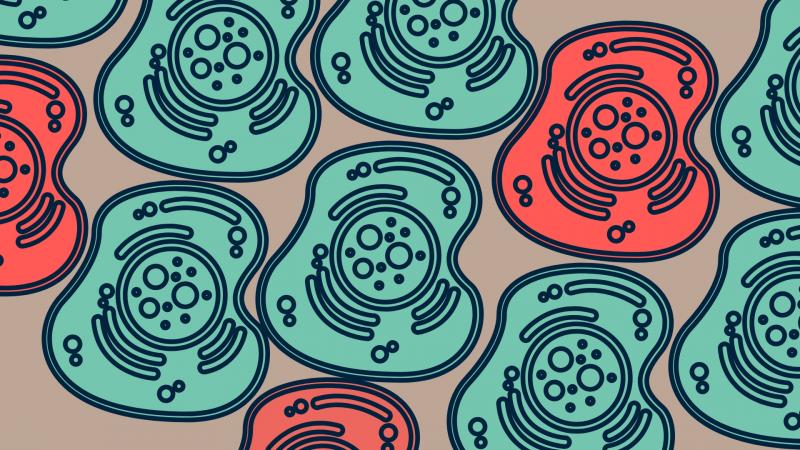
There is a lot more to fasting and feasting than the hunger and contentment that comes with it. Our cells have to continuously and dynamically turn a few genes ‘ON’ and ‘OFF’ and regulate the production of specific proteins, to cope with changes in the glucose levels. It is not often that we realise that our cells do it almost every day when we go through a cycle of Feeding, fasting and re-feeding. Now, a new study by researchers at the Tata Institute of Fundamental Research, Mumbai, has discovered that tiny RNAs, called microRNAs, help our cells to maintain an equilibrium of energy production during these states of upheaval.
MicroRNAs or miRNAs are small RNAs (Ribonucleic acid) that control, at least in some cases, protein production from genes. Typically, the recipes for building proteins, which is present in the genes, are faithfully copied into messenger RNAs, which then translate them into a sequence of amino acids. miRNAs bind to specific messenger RNAs and degrade them thus curtailing the production of those proteins.
In the current study, the researchers have detailed the gene regulation mechanism by miRNAs, which suppress the cell responses to starvation as soon as we eat. If such a response fails, it could lead to metabolic disorders like diabetes. The findings of the study are published in the journal Cell Reports, and the study was funded by the Department of Atomic Energy (DAE) and the Department of Biotechnology (DBT).
As soon as we eat our food, the glucose level in our blood shoots up. Our body wisely converts the excess glucose into glycogen, and stores it in our liver and muscles, to be used later. On the other hand, when we are asleep or in between meals, the body converts the stored glycogen to glucose, to keep the vital functions going. This process, called gluconeogenesis, continues until we break our fast and eat our meal. After we eat, this process needs to be stopped, and our cells need to readjust to the state where there is excess glucose. Here is where the newly discovered miRNAs play a role.
“We know that fasting is a gradual change and eating soon after is unanticipated and rapid. We hypothesised that a microRNA-based regulation of messenger RNAs would aid in this transition. Our quest was to identify the mechanisms that constrain the gene products in the former state, from synthesising proteins, when the organism transits to the latter state,” explains Dr Ullas Kolthur from TIFR, who was the lead author of the study.
The researchers collected miRNAs from the liver cells of mice after feeding them. They found that a set of miRNAs, which they called ‘fed miRNAs’, were explicitly produced after the animals had eaten. These miRNAs targeted two essential genes, SIRT1 and PGC1⍺, which help cells overcome the scarcity of energy during starvation. They control the metabolic activities of the cell, like production of glucose from stored glycogen and fat, creation of new mitochondria, and the release of energy from fatty acids. However, once we eat, these functions are unnecessary, and the fed miRNAs, which are produced after eating, target and curtail the messenger RNAs involved in these functions. If not, it could result in conditions like diabetes.
The researchers verified their findings by artificially altering the number of fed-miRNAs. When the miRNA levels were lower than usual, the body continued to use fatty acids as energy sources—a typical fasting response, which continued even after eating. This observation shows that fed miRNAs need to be produced at healthy levels to alter the starving response as soon as we eat.
Interestingly, the study also found higher levels of fed miRNAs in older, fasting mice, compared to the younger ones. The researchers attribute this to the fact that the livers of older mice are out of tune compared to younger mice as far as energy balance is concerned. Hence, the feed-fast-refeed cycle, regulated by miRNAs, is changed for the worse as the liver ages.
“The inability of the liver to toggle between states in the ever-changing metabolic milieu results in clinical cases of metabolic diseases. Since perturbation of fed-microRNAs in the liver leads to increased blood glucose levels and metabolic changes reminiscent of a pre-diabetic state, our findings pave the way to utilise these small RNAs as therapeutic targets to control glucose/fat metabolism and as plausible intervention to liver diseases,” says Dr Kolthur.
Studies have shown that targeting the function of PGC1⍺ is known to ameliorate symptoms of type 2 diabetes. As the feed-fast cycle gets skewed with age, interventions that fine-tune this network of molecular interactions could help to treat metabolic diseases and age-related dysfunctions.
